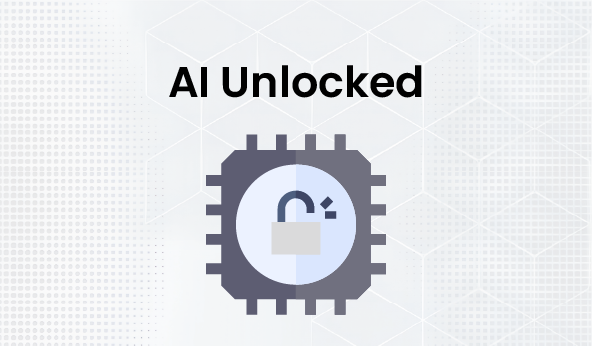AI in Higher Education: The Biggest Opportunities & Challenges for Universities in 2025
General
Artificial intelligence will change higher education till 2025, presenting opportunities and challenges. Studies show that a majority of higher education workers use AI daily.
ChatGPT lecturers use AI, and 92% of UK students embrace it.
Universities must negotiate AI's complexities as it enhances teaching and overcomes natural limitations.
For AI to reach its potential, institutions must understand and overcome its major benefits and quick adoption challenges. Let’s discover all this in this post.
Opportunities: How AI is Transforming Higher Education in 2025
1. Automating Assessments & Grading
The Problem with Manual Grading & Feedback
Manual grading and feedback is often labor-intensive and inconsistent. Professors spend a good chunk of their workweek on it — with a median of 5 hours a week devoted to grading and comments, according to a poll by Education Week.
In contexts of online learning, the time commitment could be much more important. According to a research written for the Online Journal of Distance Learning Administration, teachers dedicate roughly 12.69 hours a week to each online course—about 40% of which are used for grading and comments.
This large time commitment in grading can take away from other important duties such lesson planning and direct student involvement.
AI Tools for Grading and Student Feedback
AI-powered intelligent grading systems have become clear answers to improve consistency and efficiency in tests. By processing tests and assignments faster than hand grading, these AI systems help to lighten faculty workload and release their time for more critical chores.
Automating typical grading chores lets professors to concentrate more on educational tactics and individualized student interactions.
How to Automate Grading with AI in Higher Education

Using AI-driven tests calls for multiple steps of implementation, including:
- Review current assessment techniques: Find how artificial intelligence could streamline processes.
- Choosing AI Tools: AI grading systems should complement technology and educational objectives of the institution.
- Launch of the pilot program: Try and get comments via a small-scale rollout.
- Teach staff members and professors: Give thorough instruction to enable simple use of AI tools.
- Watch and get better: Examine the system's performance and modify it to produce the greatest outcomes.
Designed by the University of Toronto's Rotman School of Management, "All Day TA," an artificial intelligence assistant, answered 12,000 student queries annually. This suggests that real-world uses of artificial intelligence in education abound.
Benefits of AI-Based Feedback Systems for Teachers

AI-powered feedback systems like Creatrix give students individualized, real-time information that makes learning more fun. These tools can look at how students answered, figure out what they did well and what they could do better, and give them feedback that helps them get better.
Artificial intelligence (AI) makes grading easier, which gives teachers more time for teaching and helping students, which leads to better educational results.
2. Customized learning and student success
AI is a key part of personalized education because it lets faculty make learning paths that fit the needs of each student. AI-powered adaptive learning platforms can look at student performance data to change how material is delivered. This way, each student gets instruction that fits their learning style and speed through it.
AI-driven insights can also help find students who are at risk early on, so that they can get help when they need it to help them succeed and stay until they graduate.
3. Operations and administration on campus powered by AI
AI is simplifying college administrative tasks and research. Using AI to streamline admissions, course scheduling, and staff responsibilities saves time and money.
Universities can use their resources more efficiently and focus on long-term learning programs by automating mundane administrative tasks.
Challenges: Major Challenges Universities Face with AI in 2025
Universities must address data security, faculty adoption, and the delicate balance between automation and human control to employ AI ethically and effectively.
1. Data Privacy & Ethical Concerns
Personalization and grading are automated by AI-powered systems that process massive student data.
- Universities should ensure compliance with data privacy laws (e.g., GDPR) to protect student data.
- Monitor automated grading and recommendation systems to prevent bias.
- Maintain transparency in AI-driven decisions to build trust with faculty and students.
2. Resistance from faculty and a lack of training
In spite of its benefits, AI is not easily utilized in higher education for the following reasons: The idea of limiting students' freedom is still scary to many faculty . They don't know how AI can be used to grade and leave notes.
- Faculty may not be able to use AI tools well if they haven't been taught properly. In order for AI to work well with other systems, organizations need to spend money on skill-building programs for people.
- How to put it into action: Universities should start with test programs, offer ongoing training, and make sure that the rollout happens slowly so that teachers can get used to it before they start using it for real.
3. Balancing AI with Human Oversight
Though it speeds grading, artificial intelligence shouldn't replace human judgment—especially for challenging tasks like essays and creative projects! Universities must have measures in place to prevent AI comments from being accepted at face value and maintain equity. The best way is: a clever combination of human supervision with artificial intelligence efficiency to maintain accurate, balanced, and correctness.
Conclusion
Offering game-changing efficiencies and new challenges, artificial intelligence is revolutionizing higher education. The secret for colleges is to strike the proper balance—using artificial intelligence for automation without sacrificing the human element in learning. Early adopters of artificial intelligence will not only improve student performance but also keep ahead in a landscape getting more competitive.
All set to use artificial intelligence for better, more effective administration of education? Get in touch with Creatrix Campus and investigate AI-driven solutions catered for universities.
Want to contribute?
We welcome thought leaders to share ideas and write for our blog.
Become a Guest Author →
